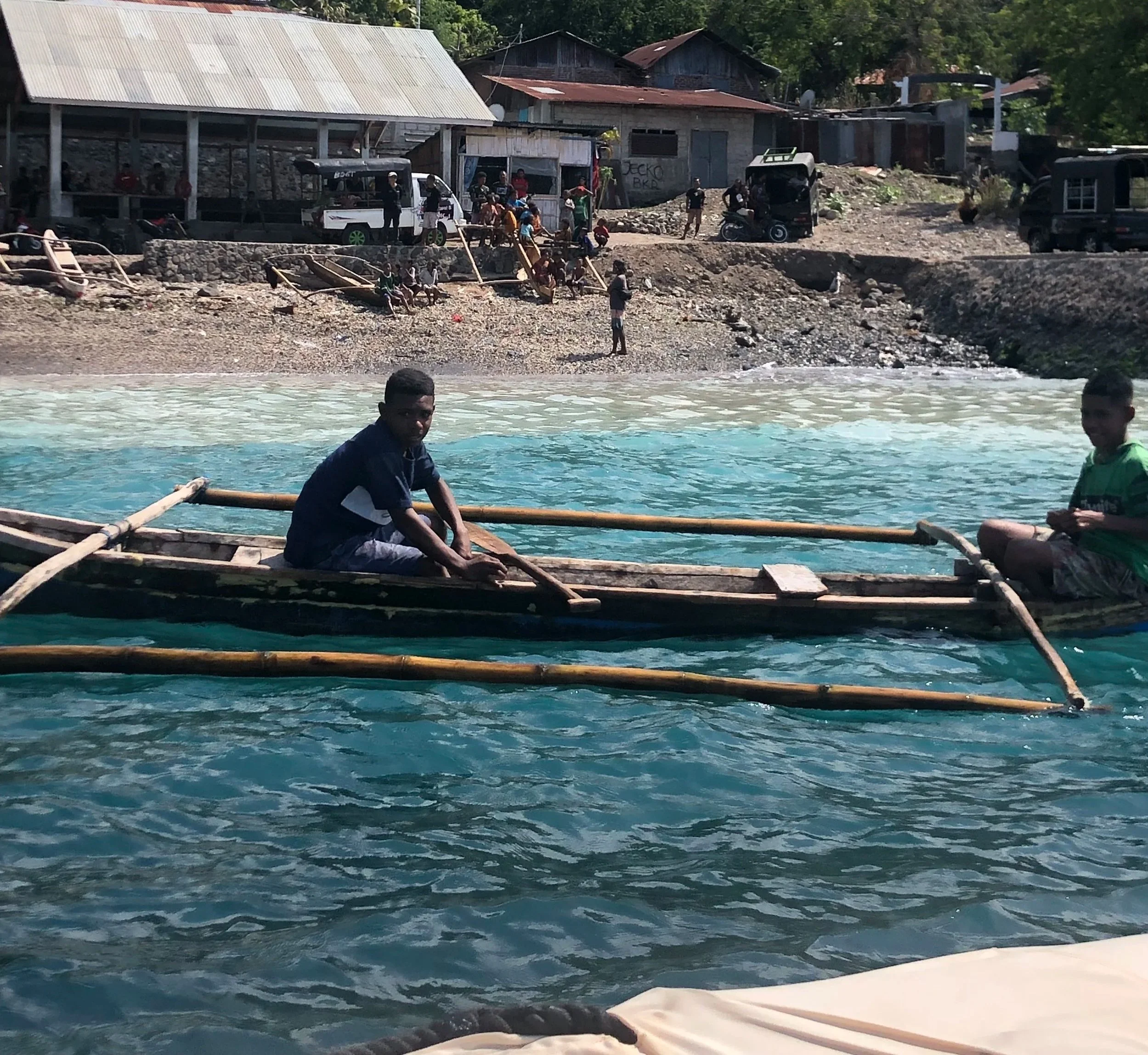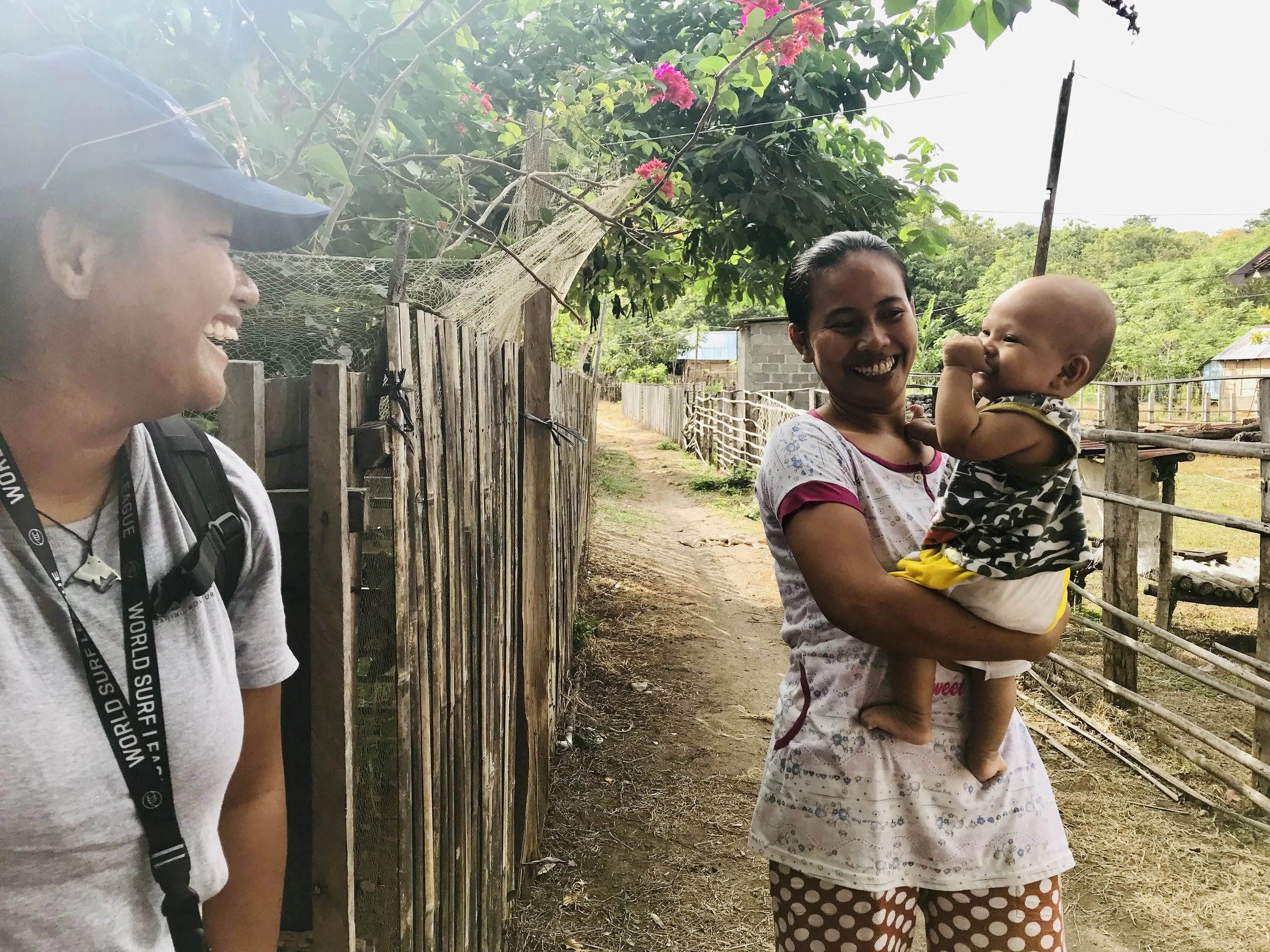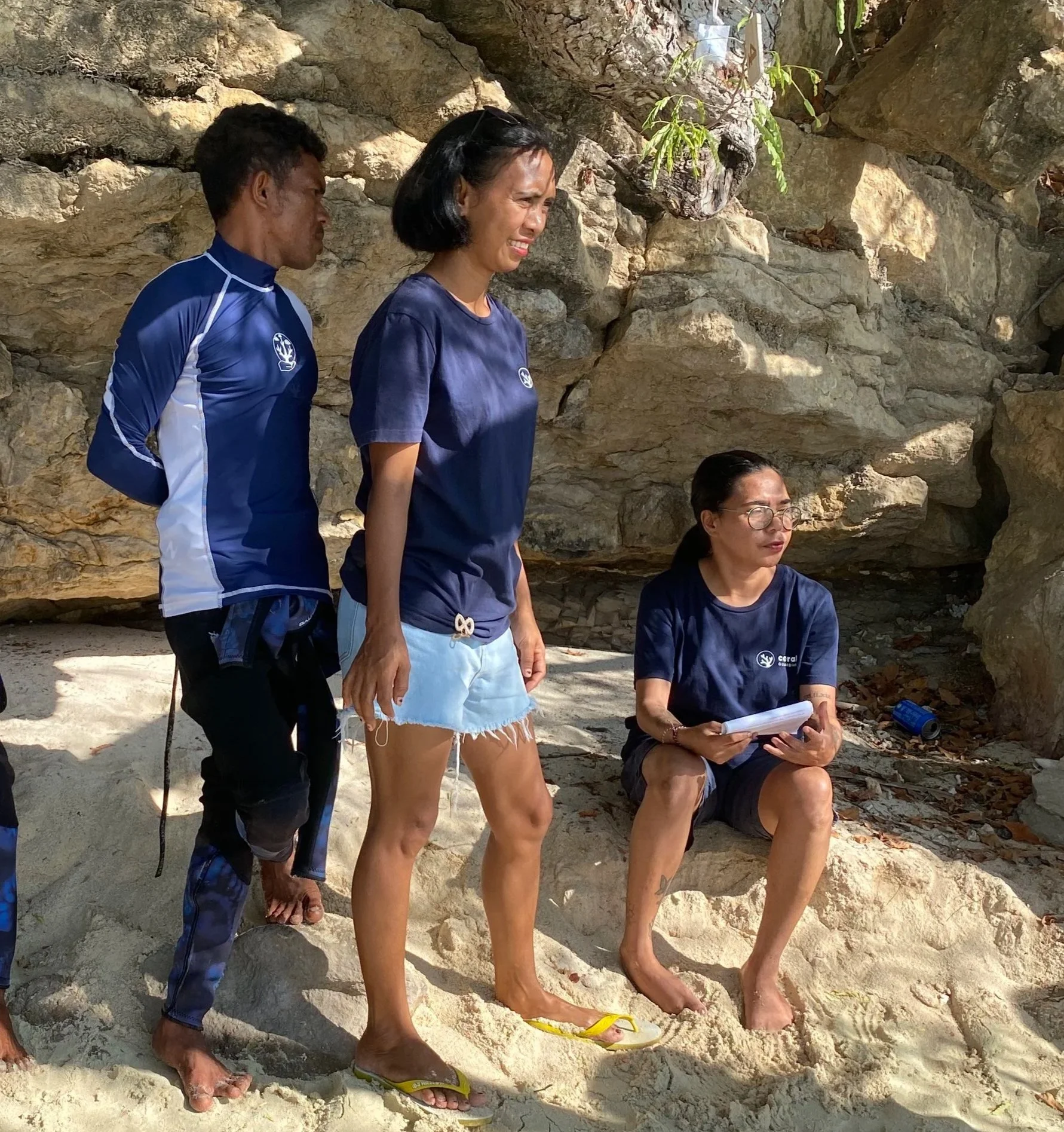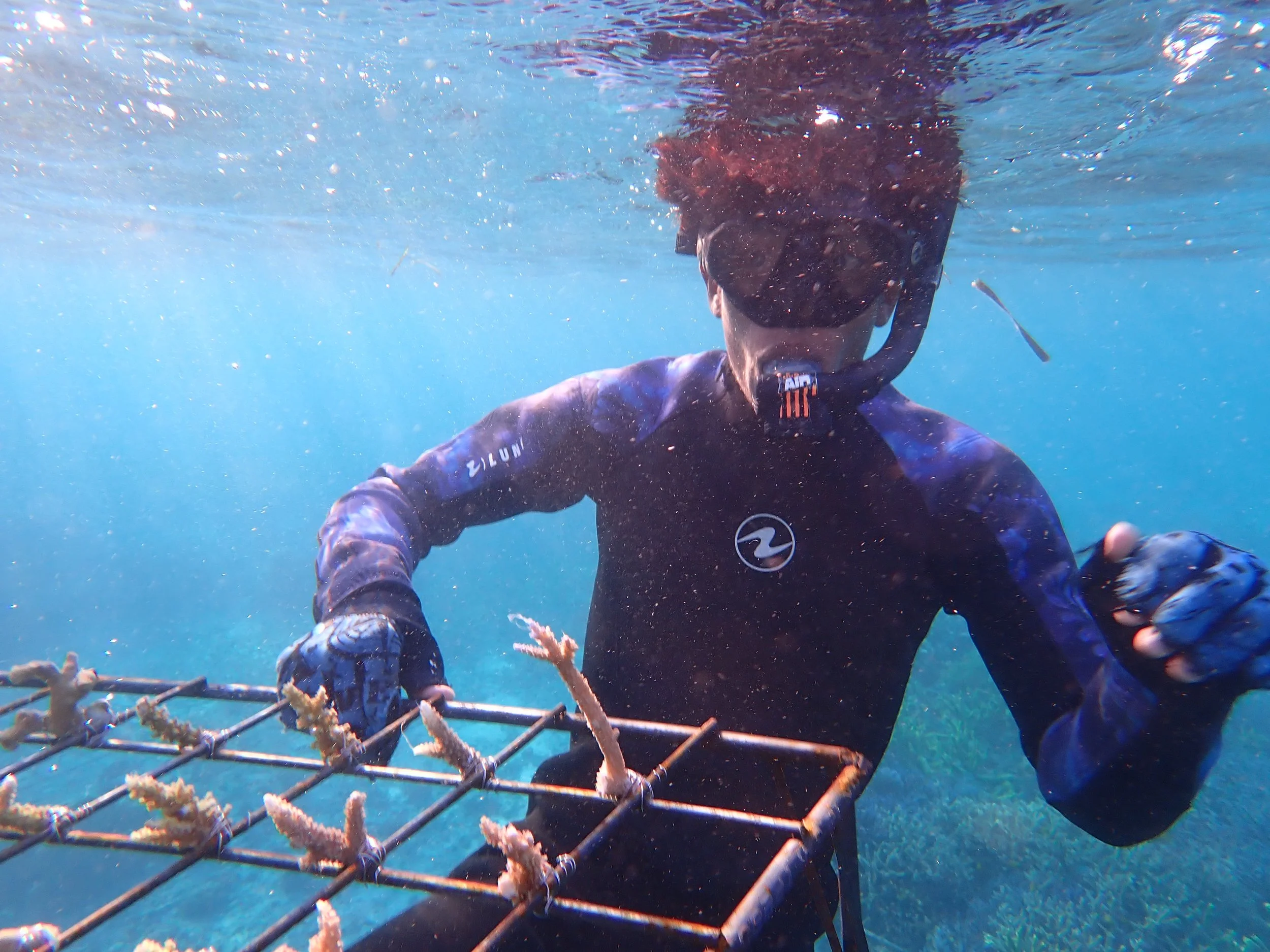Why Conservation Isn’t Black and White: What 8 Years in Indonesia Taught Me About Doing It Right
“Why don’t you just report them?”
“Shouldn’t someone arrest the illegal fishermen?”
“Have you tried Sea Shepherd-ing them into compliance?”
Oh, sweet summer child.
After nearly a decade working alongside community-based conservation in Indonesia, sailing from one fishing village to another, sipping more cups of kopi tubruk than I can count, getting sunburnt in the name of marine outreach, I can tell you this: it’s never black and white. Let’s talk about what works, what doesn’t, and why screaming at elders never made anyone want to save a coral reef.
What Even Is Community-Based Conservation?
Let’s get our bearings.
Community-based conservation means engaging local people directly in protecting the environment they live in. Instead of outsiders swooping in with rules and PowerPoints, the idea is to understand local needs, values, and struggles, and find solutions together.
It’s less “Here’s what you should do,” and more “How can we help make this work for you and the environment?”
Sounds warm and fuzzy, right? It is. Until you find yourself trying to explain the concept of bycatch to a fisherman whose boat barely floats and whose kid has a fever.
Why the Hardline Approach Doesn’t Work Here
Now don’t get me wrong, there’s a time and place for strong enforcement. But when it comes to conservation in Indonesia’s remote islands, rolling in like Captain Planet with a megaphone rarely wins hearts or minds.
I’ve seen it firsthand. NGOs with tight schedules and stricter morals show up, armed with statistics and fury. They shame fishers. Scold elders. Demand immediate change.
Result?
Locals smile politely.
Wait for the outsiders to leave.
Go back to business as usual.
Because here’s the thing: you can’t shame someone into conservation if they’re simply trying to feed their family. You also can’t fight generational habits with angry TED Talks.
An Example: Why Sea Shepherd’s Style Won’t Work in Indonesia
Before I get chased by pitchforks, yes, Sea Shepherd has done some great things. But their confrontational, aggressive style? That doesn’t translate here.
Indonesia is a place of hormat (respect), adat (custom), and gotong royong (community togetherness). You don’t just burst in and start wagging fingers. You sit down. You listen. You eat the fried banana they offered you. Then maybe, just maybe, you bring up the issue of blast fishing.
Trying to police these communities without understanding them just creates mistrust and resistance. And trust me, once you lose that, it’s game over.
What I’ve Learned: The Gentle Way Is the Long Game
Over the past eight years, I’ve realized that sustainable change unfolds not through confrontation, but patient collaboration. Working alongside NGOs that lead with empathy and respect—never blame—I’ve seen lasting results flourish.
Let me introduce a couple of these trailblazers:
Health In Harmony
This organization doesn’t just preach, “Save the forest.”
They ask something far more powerful: “What do YOU need to thrive without cutting down the forest?”
Then, they invest directly in solutions designed by the community, things like healthcare (even offered in exchange for tree seedlings or handicrafts), alternative livelihoods like beekeeping or goat programs, and Forest Guardian roles that empower locals to monitor and protect the forest.
Their approach, built on Radical Listening, is deeply rooted in community wisdom.
It’s not charity, it’s partnership.
To date, Health In Harmony has supported around 225,000 community members in protecting over 3 million hectares of rainforest across countries like Indonesia, Brazil, and Madagascar.
The outcomes speak volumes: sharp reductions in deforestation, healthier forests attracting wildlife, and improved human health and resilience, often measured in rigorous studies.
Coral Guardian
Under the waves, Coral Guardian takes a similarly empowering stance.
Since its founding in 2012, this French NGO has pioneered participatory marine conservation, inviting coastal communities to lead the restoration of their own reefs.
That means training local fishermen and youth to transplant coral fragments, monitor recovery, and protect marine ecosystems.
Their pilot work in Indonesia’s Flores Sea resulted in over 70,000 transplanted corals, a 30-fold increase in fish populations, and dozens of newly created local jobs.
They've replicated their model via the Blue Center training program, helping others across the world develop their own reef restoration projects.
Overall, Coral Guardian reports having restored tens of thousands of corals, engaged nearly 11,000 locals, and significantly boosted public awareness, reaching millions through their outreach efforts.
What Unites Them
No finger-pointing. These organizations refrain from blame. Instead, they nurture trust and ownership.
Rooted in respect. Health In Harmony and Coral Guardian start with listening, valuing the local knowledge and lived realities of the communities they work with.
Holistic impact. Their work addresses interlinked systems whether it's planetary health and human wellbeing in rainforest communities, or livelihoods and biodiversity in coral reef communities.
Long-term gains. These aren’t quick fixes. They’re long-game strategies built on mutual empowerment and measurable outcomes.
Appropriate Approach: Less Policing, More Partnership
Don’t go in as the expert. Go in as a guest. Sometimes, I bring books and swim goggles for the kids. Sometimes, I just sit on the jetty and listen.
Here’s what I’ve found makes a real difference:
1. Listening First
Before talking about conservation, ask about their lives.
How’s the fishing this year?
Any problems with schooling or fuel?
What do you want for your kids’ future?
Their answers tell us what kind of conservation will actually stick.
2. Co-Designing Solutions
When a community told me dynamite fishing was the only way to compete with bigger boats, we didn’t just say, “Stop it.” We discussed fish aggregation devices, marine protected zones, even tourism possibilities.
The goal is to find solutions they believe in, not just ones we read about in a report.
3. Respecting Local Knowledge
These folks have been reading the tides and the sky long before I showed up with my snorkel and satellite maps. We blend their wisdom with science. It's not either/or.
But What About the Rules?
Ah yes, the classic concern:
“If you don’t enforce the rules, won’t people just keep exploiting nature?”
Fair question. And no, I’m not suggesting we throw out all enforcement. But I am saying that rules alone don’t work without understanding, buy-in, and alternatives.
Think of it like trying to diet while working three jobs, surrounded by vending machines, and no time to cook. You don’t need a nutritionist yelling at you. You need access, support, and options.
Real Talk: Conservation is a Privilege
One thing I remind myself constantly:
“Caring about the environment is easier when your stomach’s full”
It’s a luxury to worry about overfishing when your pantry is stocked. In many coastal Indonesian communities, it’s about surviving today.
So before judging someone for fishing in a no-take zone or using a net that’s “technically illegal,” I ask:
Do they even know the rule?
Do they have another way to feed their family?
Is there trust between them and the authorities?
Because if the answer is no, then enforcement without empathy is just cruelty.
Community Conservation Wins I’ve Witnessed
It’s not all doom and struggle. I’ve seen beautiful moments where community-led conservation turned everything around.
In South Sulawesi: A village that once bombed its reefs is now growing coral gardens and proudly showing them off to visiting snorkelers. Why? Because they helped build the tourism homestays and benefit from every guest.
In Flores: A youth group took it upon themselves to patrol turtle nesting beaches after we gave school talks and a few field trips. One boy said, “We didn’t know they were our turtles before.” Cue tears.
In Raja Ampat: Women’s groups started making batik and snacks for dive tourists, reducing pressure on the reef while increasing household income. They named their coop “Reef & Rice.” Iconic.
What Really Makes Conservation Work?
It’s not the glossy brochures.
Not the hashtags.
Definitely not the angry foreigner with a GoPro.
It’s relationships.
It’s respect.
It’s consistency: showing up, again and again, even when things don’t go as planned.
I’ve learned that long-term impact only happens when communities see themselves as part of the solution, not just a problem to be fixed.
So if you’re passionate about conservation, I beg you: bring your heart, not just your science. Talk to the fishers. Play with the kids. Drink the coffee. Earn their trust.
And then maybe, just maybe, you’ll get to watch a reef come back to life, one coral at a time.
FAQs about Community-Based Conservation in Indonesia
Is community-based conservation effective?
Yes, especially when locals are actively involved in planning and benefit-sharing. It builds trust, ownership, and long-term sustainability.
What’s the biggest challenge?
Balancing immediate human needs with long-term environmental goals. And unlearning the idea that conservation has to look the same everywhere.
Can tourists support community conservation?
Absolutely! Choose locally run homestays, respect marine rules, join education programs, and support NGOs that work respectfully with communities.
How can I learn more or help?
Check out NGOs like Health In Harmony, Coral Guardian, and Yayasan Nazareth. Or ask me, I’ve got stories for days.
If this resonated with you, or if you’re part of a community or NGO doing similar work, let’s connect. I believe the future of conservation isn’t a war, it’s a dance. One where everyone’s invited.
Now pass the kopi and let’s keep dancing.
Thank you for reading and now back to happily roaming!




